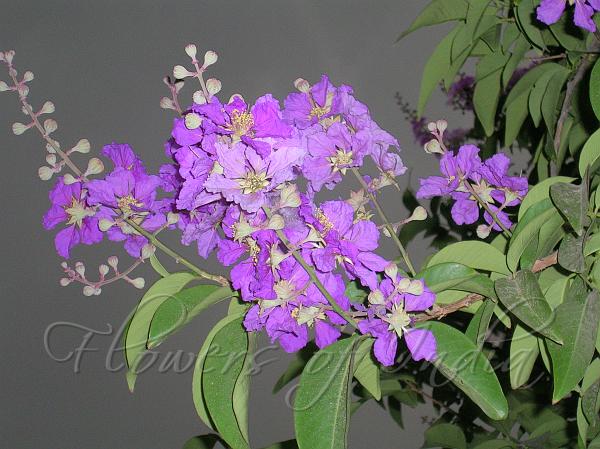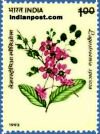|
| Queen Crape Myrtle |
|

|

| File size | 732382 |
| Original date | 4/27/05 5:58 PM |
| Resolution | 2048 x 1536 |
| Flash | Flash fired |
| Focal length | 14.9mm |
| Exposure time | 1/60s |
| Aperture | 4.6 |
| Focus Distance | |
| Metering Mode | Multi-segment |
| Camera make | NIKON |
| Camera model | E3700 |
| Sensor type |
|
|
|
Photo: |
Botanical name: Lagerstroemia speciosa Family: Lythraceae (Crape Myrtle family)
Synonyms: Lagerstroemia major, Lagerstroemia munchausia, Lagerstroemia reginae
Synonyms: Lagerstroemia major, Lagerstroemia munchausia, Lagerstroemia reginae

This tropical flowering tree is one of the most outstanding summer bloomers.
Lagerstroemia speciosa is a larger form of the more commonly grown L. indica
(Crape myrtle.)
It is called Queen Crape Myrtle because it's the Queen of the Crape Myrtles,
dominating with grand size and larger, crinkled flowers.
The name Crape myrtle is given to these tree/shrubs because of the flowers
which look as if made from delicate crape paper.
Lagerstroemia speciosa is a large tree growing up to 50' but it can be kept
smaller by trimming.
It stands on an attractive, spotted bark that often peels. This bark is
commercially used and is a valuable timber.
The large leaves are also appealing as they turn red right before they drop in
the winter.
A postal stamp was issued by the Indian Postal Department to commemorate
this flower.
Medicinal uses: Leaves are used in the Philippines as a folk medicine for the treatment of diabetes and kidney diseases.
The fruit are used India to cure mouth ulcers. The roots are also considered astringent and the seeds narcotic.
Leaves are used in the Philippines as a folk medicine for the treatment of diabetes and kidney diseases.
The fruit are used India to cure mouth ulcers. The roots are also considered astringent and the seeds narcotic.
Medicinal uses:
 Leaves are used in the Philippines as a folk medicine for the treatment of diabetes and kidney diseases.
The fruit are used India to cure mouth ulcers. The roots are also considered astringent and the seeds narcotic.
Leaves are used in the Philippines as a folk medicine for the treatment of diabetes and kidney diseases.
The fruit are used India to cure mouth ulcers. The roots are also considered astringent and the seeds narcotic.
| Identification credit: Tabish | Photographed in Delhi & Imphal. |
• Is this flower misidentified? If yes,